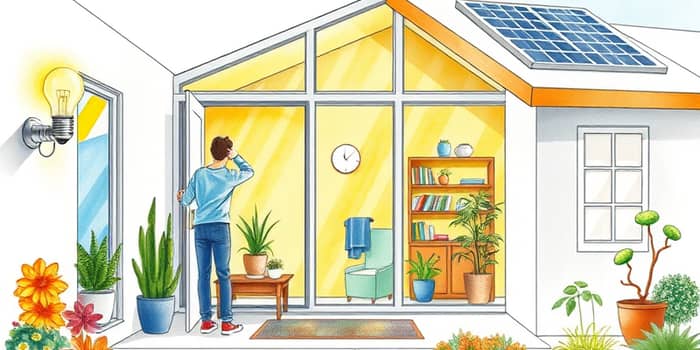
As energy and water costs climb, homeowners face mounting pressure on budgets. This guide offers actionable strategies to cut expenses without sacrificing comfort and reclaim control over monthly spending.
In 2025, the average U.S. household pays $266 per month for utilities, including electricity, gas, water, sewer, trash, and connectivity services. Costs vary by region—New England and coastal areas often exceed national averages, while some western and midwestern states fall below.
Breaking down the major categories:
Residential electricity rates have surged nearly 30% since 2021, and gas costs are up 40% since 2019. These trends make efficiency improvements urgent and impactful.
Simple adjustments can yield immediate relief. Focus first on high-impact, low-cost changes you can implement today.
Heating and cooling account for the largest share of energy bills. Reducing air leakage and improving insulation can cut up to 25% of these costs.
Seal gaps around doors, windows, and outlets with caulk or weatherstripping. Add insulation in the attic, walls, and crawl spaces. Consider window treatments—heavy curtains or cellular shades—to block heat gain in summer and retain warmth in winter. Regularly replace HVAC filters to ensure maximum system efficiency and longevity.
Water-related expenses, though smaller, add up. Leaky faucets and inefficient fixtures can waste hundreds of gallons annually.
Install low-flow showerheads and faucets, and consider dual-flush toilets or retrofit kits. Fix dripping faucets and running toilets immediately. In the garden, water during cooler hours and use drought-resistant plants or smart timers to prevent overwatering.
Long-lasting savings often stem from simple habits. Encourage every household member to participate.
Investing in property upgrades yields compounding returns—lower bills and increased home value. Consider ENERGY STAR appliances and programmable thermostats. Solar panels can offset a significant portion of electricity needs, especially in sunny regions, with payback periods as short as five to seven years through savings and tax incentives.
Major renovations—new windows, upgraded insulation, energy-efficient doors—may qualify for rebates or tax credits. Research local utility incentive programs and time upgrades to coincide with available funding.
Utility providers often offer rate plans and assistance programs that can reduce costs. Ask about time-of-use pricing to shift high-energy tasks to off-peak hours. Inquire about home energy audits, rebates for efficient appliances, and budget billing plans that level out seasonal spikes.
Many states and municipalities also offer grants or low-interest loans for energy improvements. Leveraging these programs minimizes upfront costs and accelerates payback.
Your geography shapes usage patterns. Homes in cold or hot climates incur higher heating or cooling bills. Compare your monthly statement to state averages, then set realistic reduction goals—5%, 10%, or more.
Use smart meters and home energy monitors to track consumption in real time. Logging data helps identify anomalies and prioritize interventions.
Explore resources from the U.S. Department of Energy and EPA’s Energy Star program for calculators, guides, and rebate listings. Local utilities often maintain online portals for audit scheduling and incentive applications.
DIY audit kits are a low-cost way to start. Professional audits uncover deeper inefficiencies and cost-saving opportunities.
Reducing utility bills is both an economic and environmental win. From simple behavior tweaks to strategic investments, the path to savings is clear. Start with easy changes, track your progress, and reinvest savings into further efficiency. By taking action now, you’ll enjoy immediate relief and long-term resilience against rising costs.
References













